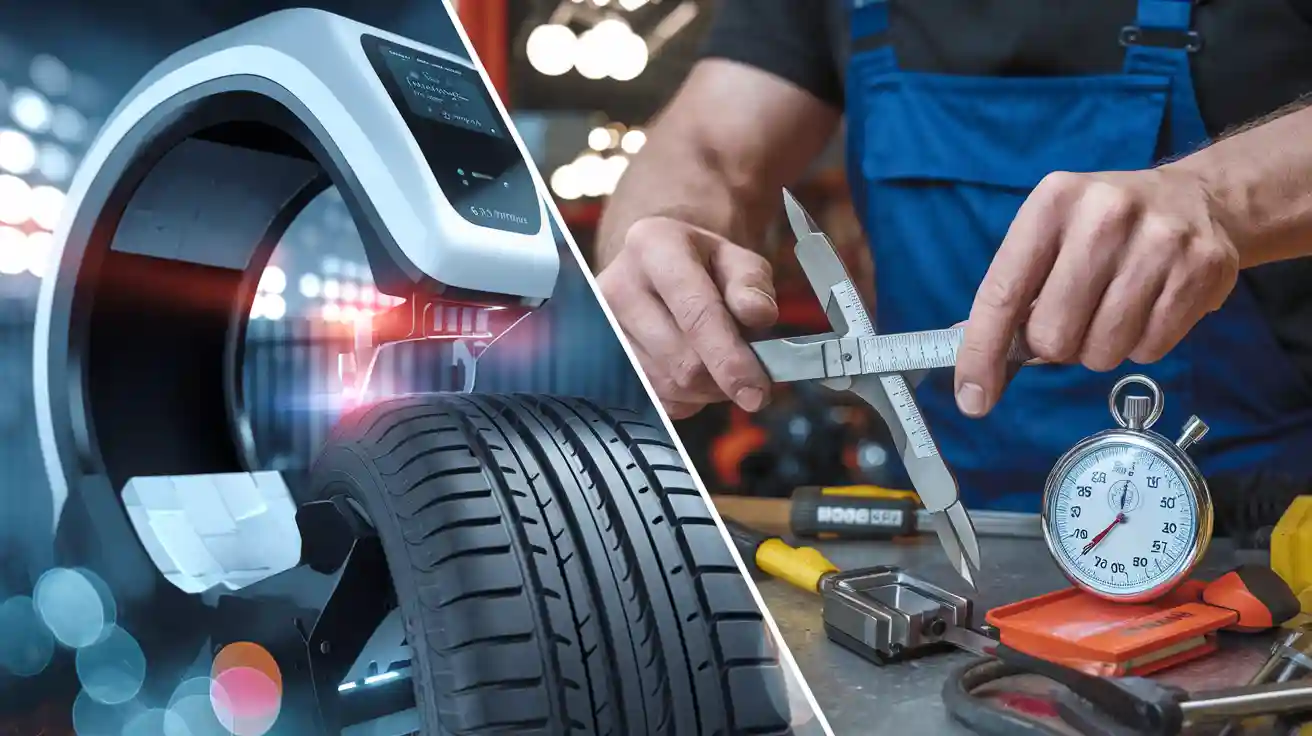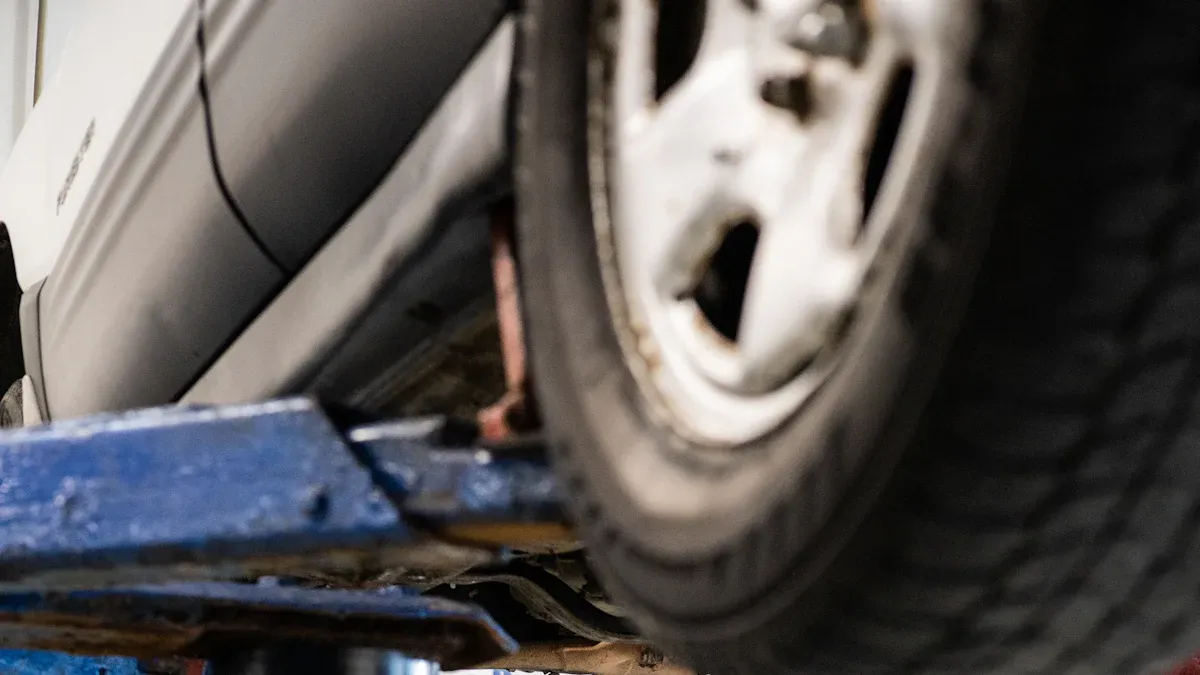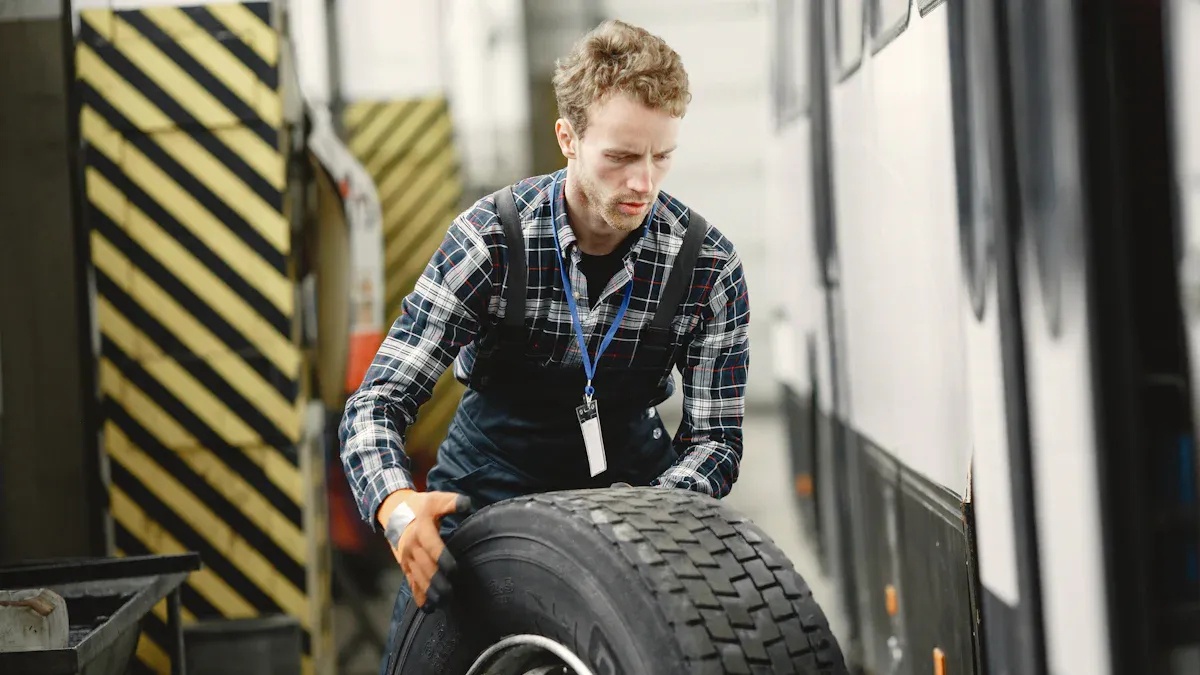
When you perform a fleet tire inspection using mechanical calipers, it takes a significant amount of time—about 15 minutes for a manual check. In contrast, a digital optical tire scanner can complete the inspection in just 90 seconds. This shift from mechanical to digital tire inspection really enhances your fleet’s efficiency. Faster checks mean vehicles spend less time out of service, allowing you to keep your fleet driving longer. This improvement helps you accomplish more and saves money. Embracing technology for fleet tire inspection can greatly enhance your operations.
Ključne ugotovitve
Optical tire scanners check tires in just 90 seconds. Mechanical calipers take 15 minutes. This speed helps your fleet stay on the road longer.
Optical scanners lower human mistakes. They give exact measurements with less than 0.2 mm error. This makes fleet operations safer.
Buying optical tire scanners may cost more at first. But they can save 20% or more in labor costs later. This leads to big savings over time.
Regular tire checks with new technology find problems early. This cuts down on surprise repairs and downtime. It makes the fleet work better overall.
Optical tire scanners help the environment. They make tires last longer and improve fuel use. This makes them a smart choice for eco-friendly fleet management.
Tire Inspection Methods

For tire inspections, you mainly have two methods: mechanical calipers and optical tire scanners. Both methods have good and bad points.
Mechanical Calipers
Mechanical calipers are a traditional tool for checking tires. They need manual measurements, which take a lot of time. You must check each tire’s tread depth and pressure one by one. This method can lead to mistakes because it depends on the technician’s skill and focus.
Nasvet: Regular checks with mechanical calipers can help find problems early. But, they might not always give the most accurate results.
Optical Tire Scanners
Optical tire scanners are a big step forward in tire inspection technology. These tools use digital images to quickly and accurately check tire conditions. You can finish an inspection in just 90 seconds, which is much faster than the 15 minutes for manual checks.
The advantages of using optical scanners go beyond speed. They give exact measurements, lowering the chance of human mistakes. This accuracy is very important for fleet safety. Here are some reasons why accurate tire inspections are important:
Tires are the only part that touches the road, so their condition is key for preventing accidents.
The FMCSA requires pre-trip inspections to follow safety rules. Not following these rules can cause fines and problems for operations.
Regular inspections help find possible issues early, which cuts down on expensive repairs and unexpected downtime.
By using optical tire scanners, you improve the efficiency of your fleet tire inspection. You also make sure your vehicles stay safe and follow the rules.
Efficiency in Fleet Tire Inspection Mechanical vs Digital

Time Savings
When you look at optical tire scanners and mechanical calipers, the time savings are huge. Optical scanners can check a tire in just 90 seconds. On the other hand, manual checks with mechanical calipers take about 15 minutes. This means you can check more vehicles in less time. Here are some important points about the time savings:
Instant reports replace manual systems that often take a day to give fleets information.
You can measure all tires at once in about 20 seconds with high accuracy.
The tread scanner checks the whole tire in just a few seconds.
These time savings help keep your fleet moving. Less time on inspections means more time on the road, which can lead to more work done.
Operational Impact
The effect of using optical tire scanners is big. These tools give accurate, real-time data on tire health. This information helps your fleet maintenance teams work better every day. Faster inspections cut down on manual data entry, which makes scheduling easier based on the tire’s actual condition.
Optical tire scanners also reduce vehicle downtime. They can check many tires quickly, so your fleet operations keep going smoothly. This efficiency leads to cost savings. For example:
Advanced tire monitoring systems help lower maintenance-related downtime and emergency roadside calls.
Proper tire inflation can boost fuel efficiency by 3%, leading to big savings for fleets each year.
Proactive tire management increases safety, as under-inflated tires are linked to a higher crash risk.
Accuracy and Reliability
Mechanical Calipers Accuracy
Mechanical calipers can give basic accuracy, but they have some limits. Their accuracy relies a lot on how skilled the technician is and how careful they are. Mistakes can happen easily during manual checks. For instance, if a technician reads the caliper wrong or uses it incorrectly, the data might not show the real tire condition. This can cause wrong evaluations and unsafe driving situations.
Optical Scanners Accuracy
On the other hand, optical tire scanners are much more accurate. These tools measure tread depth with an error of less than 0.2 mm. The highest percentage error is 2.47%, while the lowest is 0.41%. This level of precision helps you find tire tread grooves and measure their depth well.
Optical tire scanners improve inspections by using high-quality images. They take clear pictures of tire sidewalls for detailed checks. Unlike manual inspections that depend on human judgment, these scanners use AI to find defects. This technology can spot problems like cracks and bulges, which cuts down on human mistakes. The quick, non-intrusive scanning lets you inspect tires without stopping vehicles, making the process faster and more reliable.
Getting accurate tire measurements is very important for your fleet’s safety. Here are some key points to think about:
Devices that check tire pressure in real-time help you quickly fix over- or underinflation and leaks. This lowers the chance of roadside issues.
A big FMCSA crash study showed that 6% of trucks in injury or fatal crashes had tire problems that proper inspections could find.
About 11,000 crashes each year are caused by bad tires. Worn-out tires make vehicles three times more likely to crash than those with enough tread depth.
Keeping tires in good shape not only boosts safety but also helps with fuel efficiency and cuts emissions. This makes tire care a key part of being environmentally friendly and saving money in transportation.
By picking optical tire scanners instead of mechanical calipers, you make sure your fleet gets accurate and reliable tire checks. This choice leads to safer operations and better following of safety rules.
Cost Implications
Initial Investment
When you think about tire inspection methods, the first cost is very important. Mechanical calipers are cheap. You can buy them for a low price. But, they need skilled workers to use them well. This need for skill can cause hidden costs from mistakes and slow work.
On the other hand, optical tire scanners cost more at first. You might need to set aside more money for these advanced tools. Still, the benefits usually make up for the costs. Spending money on technology can make your work easier and lower labor costs over time.
Long-term Savings
The long-term savings from using optical tire scanners can be big. Companies that use these systems often save 20% or more in labor costs. This saving comes from quicker inspections and less time on manual checks.
Here’s how tire inspection technologies affect the total cost of ownership (TCO) for fleet vehicles:
Key Insights | |
|---|---|
Tire quality and tread life | Directly influence operating costs and fuel economy |
Economic pressures (inflation) | Affect overall tire market costs, impacting TCO |
Importance of maintenance | Regular maintenance can reduce long-term costs associated with tire performance |
Also, tires are one of the biggest ongoing costs for fleets, just after fuel. Good tire management can lead to better returns on investment (ROI) and lower TCO. By using real-time tire data from telematics and sensors, you can keep a close eye on tire conditions. This smart approach helps stop unexpected problems, which cuts costs for tire replacements.
Optical tire scanners have many benefits compared to mechanical calipers. They help you save time with fast inspections that take only 90 seconds. This speed keeps your fleet on the road for longer.
Also, optical scanners improve accuracy and trustworthiness. They give exact tire health checks, which helps you make better maintenance choices. The technology makes inspections the same every time, getting data quickly and removing human mistakes.
Using optical tire scanners also helps the environment. They cut down on waste and make tires last longer, supporting green practices in your fleet work. By picking optical scanners, you boost safety, efficiency, and eco-friendliness in managing your fleet.
Pogosta vprašanja
What is the main advantage of using optical tire scanners over mechanical calipers?
Optical tire scanners save time and are more accurate. They finish inspections in just 90 seconds. In comparison, mechanical calipers take about 15 minutes. This speed helps keep your fleet on the road longer.
How do optical tire scanners ensure accuracy?
Optical tire scanners use special imaging technology. They measure tread depth and find defects. This reduces human mistakes and gives precise measurements with an error margin of less than 0.2 mm.
Are optical tire scanners worth the initial investment?
Yes, they may cost more at first, but optical tire scanners save money in the long run. You can lower labor costs and manage tires better, leading to better returns on investment.
How often should I inspect my fleet’s tires?
You should check your fleet’s tires regularly, ideally before each trip. Frequent inspections help find problems early, which keeps everyone safe and extends tire life.
Can I use optical tire scanners in all weather conditions?
Yes, optical tire scanners work well in different weather. They give accurate readings in rain, snow, or sunlight, making them reliable for inspections all year round.
Glej tudi
Razumevanje pametnih detektorjev globine profila pnevmatik in njihove funkcionalnosti
Uporaba merilnika globine tekalne plasti pnevmatike za natančne meritve






